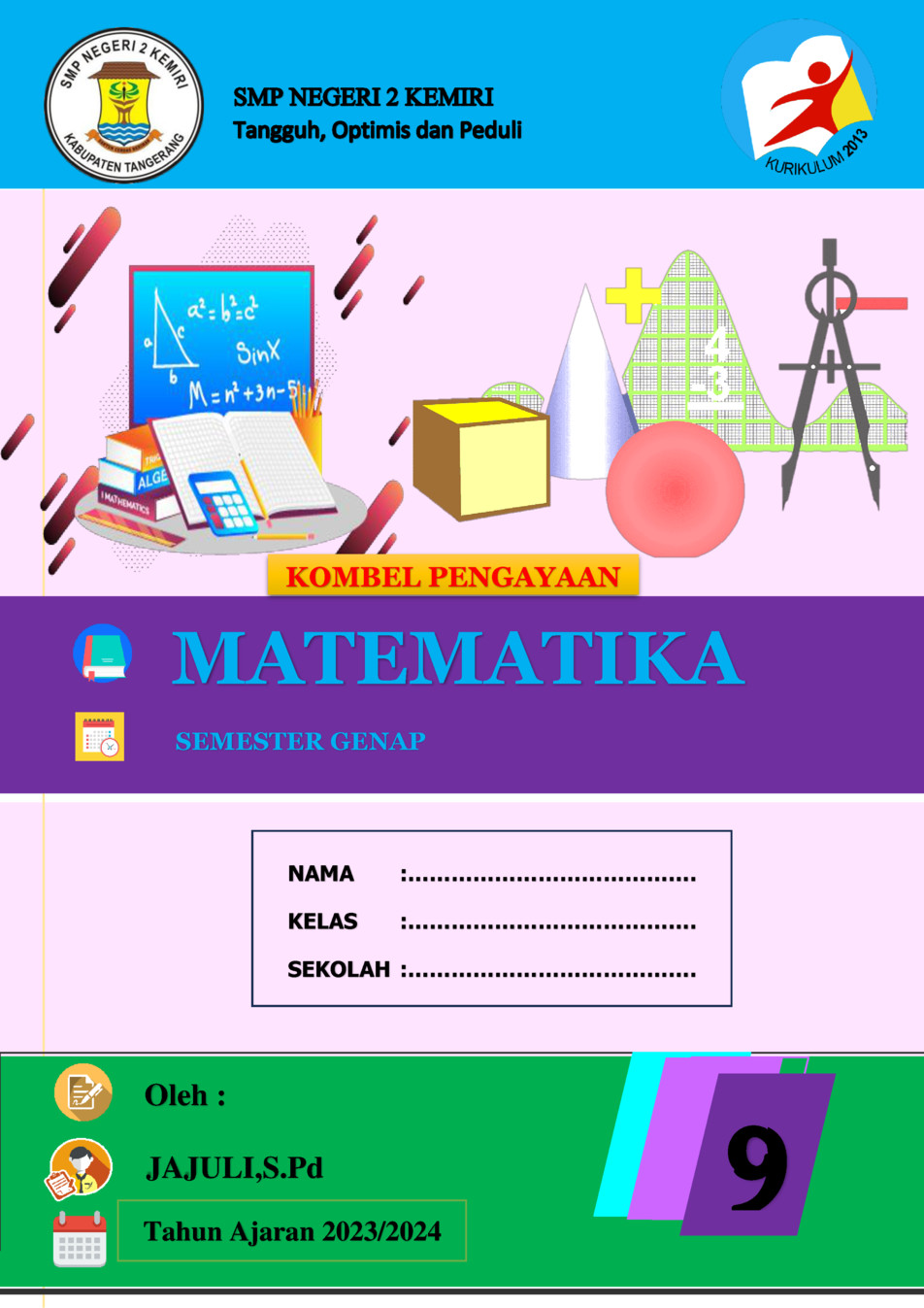MTK kls 9
MTK kls 9
Summary of "MTK kls 9 KOMBEL PENGAYAAN"
Introduction
The document is a math module created for junior high school students, focusing on Problem Guided Inquiry-based learning. It emphasizes that mathematics is not just about facts and principles but also about a systematic process of discovery related to natural phenomena.
Content Overview
The module was developed by educators to enhance teachers' competencies in implementing the 2013 Curriculum and Merdeka Curriculum. It covers topics from the second semester, encouraging students to find answers to problems through self-discovery.
Tabung (Cylinder)
The section explains the concept of a cylinder, its characteristics, such as having three sides and two edges, the presence of circular bases, and the absence of vertices. The cylinder is commonly found in everyday objects like cans, bottles, and glasses.
Ciri-Ciri Tabung (Characteristics of a Cylinder)
The characteristics of a cylinder include having three sides, two edges, and circular bases. Understanding these features is essential for calculating the volume and surface area of a cylinder.
Rumus Tabung (Formulas for a Cylinder)
Formulas for calculating the volume, surface area, and circumference of a cylinder are provided. These formulas involve the radius and height of the cylinder, emphasizing the importance of understanding the concepts for accurate calculations.
Unsur-Unsur Tabung (Elements of a Cylinder)
The elements of a cylinder include the base and top sides, the curved surface, radius, diameter, and height. Each element plays a crucial role in defining the properties and calculations related to cylinders.
Kerucut (Cone)
The cone is described as a solid figure with a pointy apex and a circular base. It is commonly seen in objects like party hats, rice cones, and funnels, emphasizing its practical applications in daily life.
Jaring-Jaring Kerucut (Net of a Cone)
Similar to other geometric shapes, a cone also has a net comprising two surfaces. Understanding the net structure of a cone is essential for visualizing its three-dimensional form and calculating its properties accurately.
Irisan Kerucut (Cone Sections)
The concept of cone sections, including parabola, hyperbola, ellipse, and circle, is explained. These sections are formed when a flat plane intersects a cone, resulting in various geometric shapes and curves.
Rumus Kerucut (Formulas for a Cone)
The document provides formulas for calculating the volume, surface area, and other properties of a cone. Understanding these formulas is essential for performing accurate mathematical calculations related to cones.
For more detailed information, please refer to the original document.

